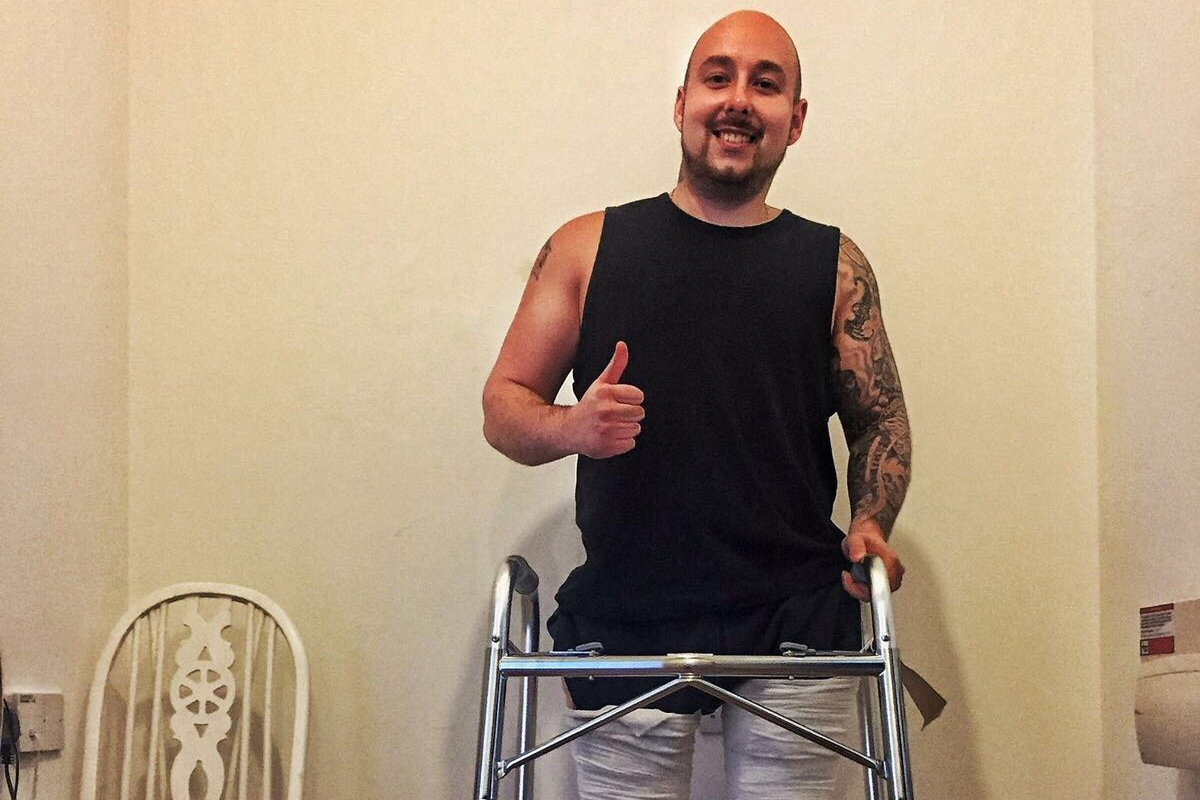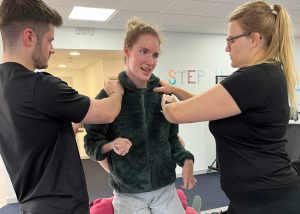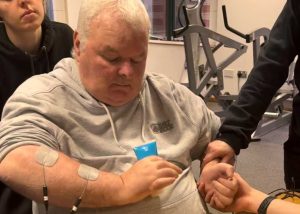Dan, from Medway in Kent, was on a night out with his friends on June 5t, 2016. However, this was no normal night out and Dan woke up at 5.30am lying in a ditch, having obtained a serious injury and unable to move.
Dan has no recollection of what had happened and was told by doctors he will probably never regain his memory of that night. It was later thought by doctors that his drink had probably been spiked.
Luckily, through the kindness of strangers, he was found, and an ambulance was called to take him to Kings College Hospital, in London. At the time Dan was struggling to keep conscious and on arrival at the hospital he was immediately taken in for scans and testing. Doctors diagnosed a complete T11-T12 ASIA A spinal cord injury, leaving him with no movement in his legs or bowel/bladder control.
Once stabilised, Dan was moved to St. George’s Hospital where he was told he would spend the next five weeks. However, not long after arriving, things took a turn for the worse as Dan developed septicaemia and E.coli and spinal fluid rushed into his brain. He then spent the next three weeks under serious monitoring and was on antibiotics to try and clear the infection. Dan lost five stone in just two weeks and was bed bound. He also lost a lot of muscle in his legs and had low motor neuro flaccid legs.
After fighting off the infection, Dan was moved to Stanmore Hospital, which specializes in treating spinal cord injury. Whilst there he learned how to transfer from his bed to a wheelchair and vice versa, as well as developing basic skills such as making a cup of tea. He spent the next two months at Stanmore, spending two hours a day with a specialist team. He tried to stand with the help of frame, he used the gym five times a week and took part in a variety of activities such as swimming.
In September 2016, Dan returned home to continue his care. Whilst at Stanmore, Dan had been speaking to other patients in a similar situation and was told about Neurokinex, a specialist spinal cord injury rehabilitation charity.
In October, Dan joined the Neurokinex Watford site as he was offered six free sessions having been at Stanmore. He started off with Activity Based Rehabilitation ABR using a variety of exercise machines and equipment. The staff then said he was ready to use the Xcite Machine, a newly developed wide pulse muscle electrical stimulation programme and Dan moved to Neurokinex Gatwick where this machine was available.
This ground-breaking protocol targets a different set of fatigue-resistant muscle fibres compared to those more widely used in electrical stimulation. The muscle fibres targeted are closely connected to the spinal cord. This, combined with the precise administering of the electrical stimulus to move the muscle or paralysed limb, excites the central nervous system in such a way it can promote neuroplasticity – the brain’s ability to form new neural connections to compensate for injury.
Since attending Neurokinex Gatwick twice a week, Dan has been working on a wide range of muscle groups to strengthen his legs and lower back. During his sessions he uses the Xcite machine whilst performing a range of exercises such as squats and sitting to standing work to encourage contractions in the muscles. The results of the wide muscle stimulation treatment have also seen Dan regain sensation and control of his bowel and bladder.
“What I love about Neurokinex is that they work on my whole body – not just the parts which are still functional. Each session is really varied, the staff are very supportive, and I consider myself very lucky to have access to this equipment,” says Dan. “I was told at the time of my injury that I would never walk again and yet on my second to last day in hospital I started gaining movement in my toe. I was then classified as an incomplete Asia C injury. In June this year an MRI scan showed that my spinal cord is going around the injury. The surgeon said he had never seen this before and we don’t yet know what it will mean for me in the future.
“My short-term goal is to be able to stand up with aids, and then to build on this to stand without them. Long term of course the goal is to walk again. No-one really knows how far I can get in restoring strength, sensation or movement but if anyone can make it happen, Neurokinex can.”




